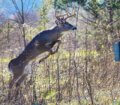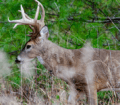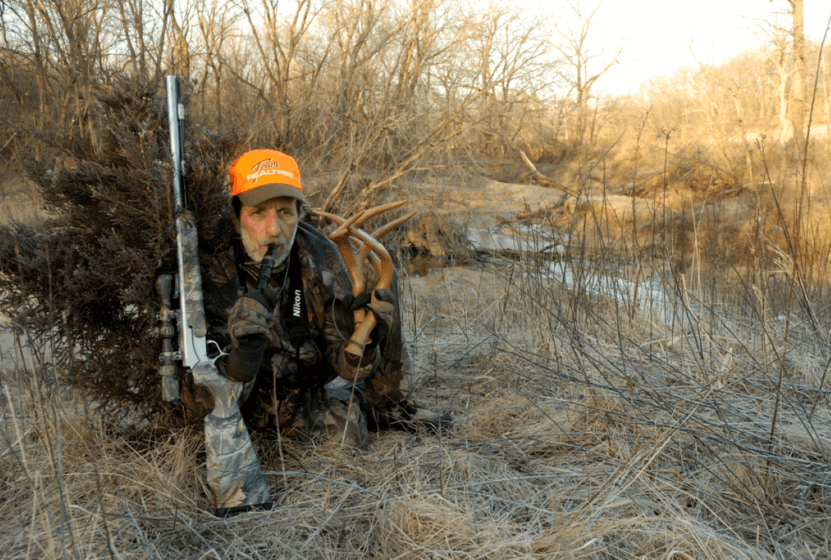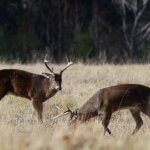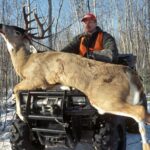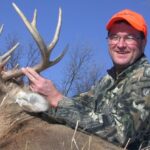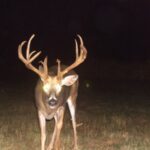Editor’s Note: Nationally-known deer seminar speaker, avid deer hunter and my longtime friend, Ronnie Groom of Panama City, Florida, owned C&G Sporting Goods for 60 years. He’s faced this problem of how to get a buck within range often in the areas he hunts. He uses these tactics, which work well for bowhunters and/or gun hunters, to funnel deer into their stand sites.
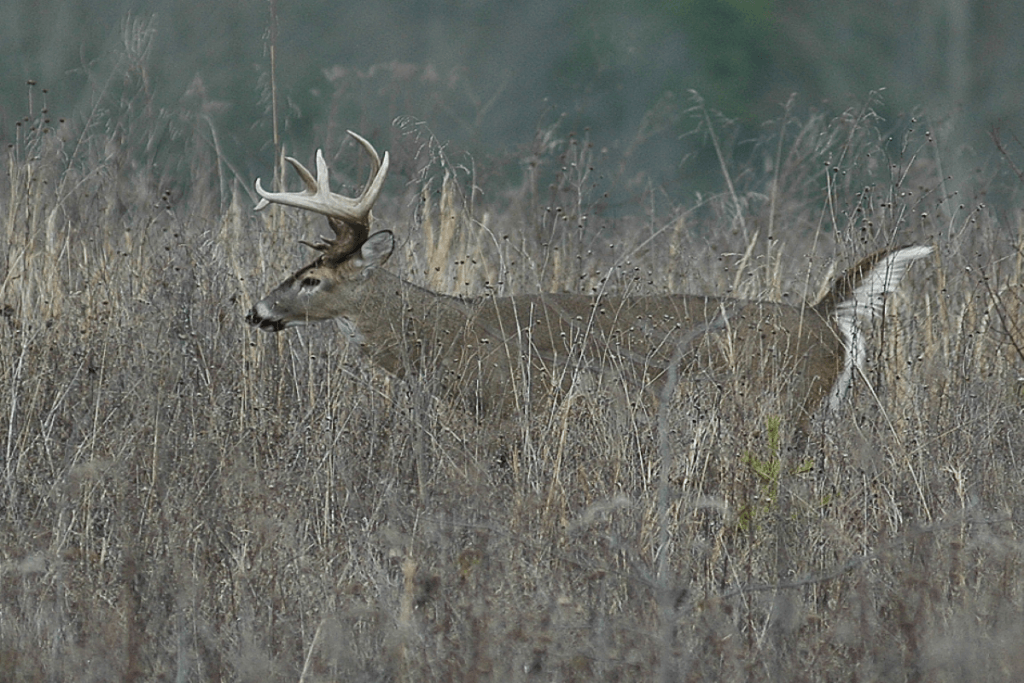
If you know where most people hunt most of the time, then you can concentrate deer into smaller areas. If hunters mainly are hunting in the big woods that run to the edges of a thicket, most of the deer will concentrate along the edges of the thickets, knowing they can dart into heavy cover if they spot or smell a hunter. Or, they will concentrate in thickets, realizing that many hunters won’t go in the thick cover to find a deer. But Groom will move into thick areas where the deer are the most concentrated and then decide how best to bag them.
“If there’s a 4-year-old clear-cut with head-high bushes in it, and I know that’s where the deer are concentrating, then I go into that thicket and attempt to take the deer,” Groom says. “Usually there will be at least one tree or one high point in a thicket where I can set-up a stand. Most hunters will avoid this region because they can’t see to shoot. But of course, that’s the reason the deer are in this thick cover.
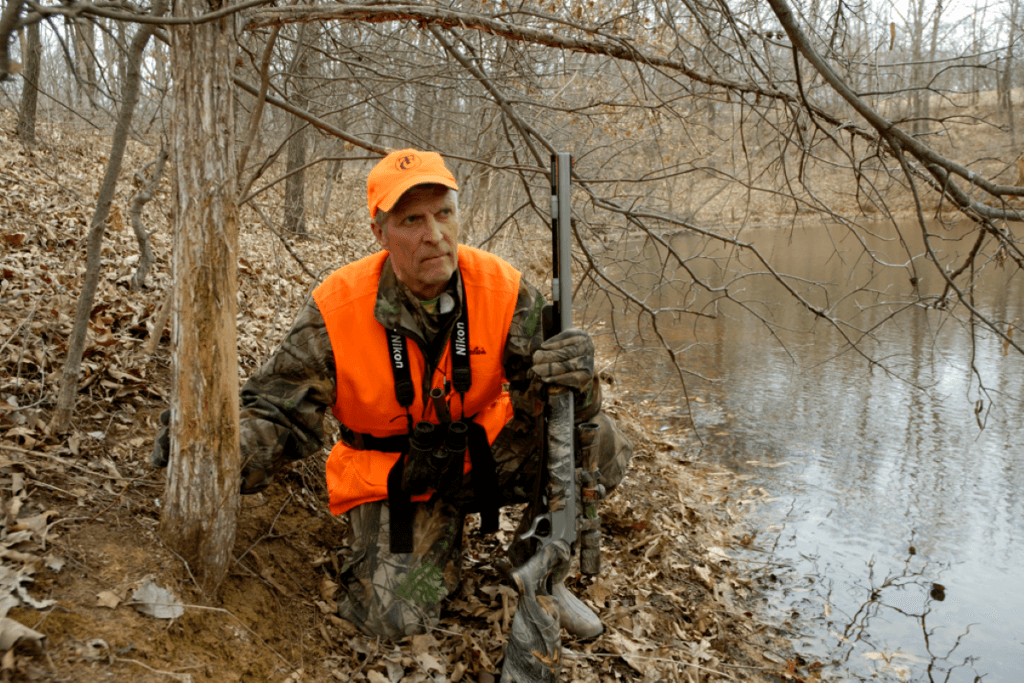
“I’ll move into the cover before the season begins with a pair of pruning shears and hedge clippers. After deciding where I will set-up my tree stand, I’ll cut small trails like spokes leading away from that tree stand for about 30 yards. My trails may only be 3 – 4 feet wide, but that is all the space I need to see and take a deer. When the hunting pressure builds, I move into that thick cover and set-up where I can see down my shooting lanes.
“I assume that hunters are intelligent people, and if they find a trail leading into thick cover, they will follow it. For this reason, I don’t cut a trail into my stand, and I don’t go to my stand from the same direction every time I hunt it. As a matter of fact, I may have a stand in cover so thick that I may have to crawl to it – which makes the stand more effective. If the hunters can’t find my stand, which is in the thick cover that the other hunters around me are forcing deer into, then I have the perfect place to bag a buck. Most of the time, I will take bigger deer in the thicker cover later in the season when the hunting pressure is high.”
Unless a hunter can make a deer walk within range, he may see many whitetails but bag few. Groom has perfected his whitetail hunting, primarily hunting Florida, Georgia and Alabama – all heavily populated with deer and each having liberal bag limits – especially for does. Because Groom has the opportunity to hunt deer from October 15 until the end of January (or mid-February in some sections of the south) each year, he can observe and bag more deer than the average hunter. Groom has the opportunity to study and test his theories against deer regularly. To be effective, he’s had to learn how to put deer within range, using many different tactics, which will work for you too.
When you use the links below to go to Amazon, notice on the left of the Audible option where Amazon says you can hear a sample that gives you 10% of these books for free! On the right side of the page for each book and below the offer for a free Audible trial, you can choose to Buy the Audible book.
Be sure to also check out John’s Free Books as our gift to you!
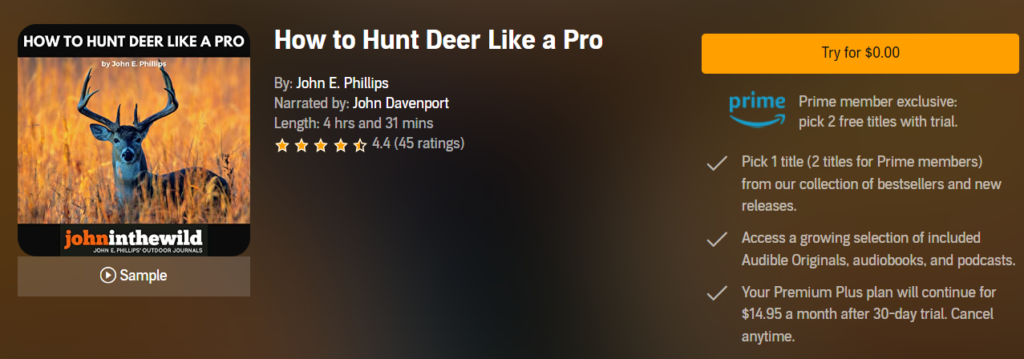
Prime Members: You’re eligible to claim 2 free titles with your 30-day Audible Premium Plus trial! Browse more than 100 of John E. Phillips’ expert guidebooks on hunting and fishing here.
Books By Topic
Category Shortcuts: View on Amazon
| Deer Hunting | Turkey Hunting | Elk Hunting | Bass Fishing |
| Mule Deer Hunting | Bowhunting | Bowfishing | Crappie Fishing |
| All Cookbooks | Hunting Cookbooks | Fishing Cookbooks | All Audible Books |

How to Hunt and Take Big Buck Deer on Small Properties
In this book, you’ll hear from 14 hunters who either have gained permission or leased properties as small as six acres to as much as 250 acres, and how they consistently take older-age-class bucks off these little lands.
VERSIONS: AUDIBLE, KINDLE & PRINT

Jim Crumley’s Secrets of Bowhunting Deer
Using a black magic marker and a gray work jumpsuit, Jim Crumley of Buchanan, Virginia, drastically changed the nature and purpose of hunting camouflage when he created the first sportsman’s camouflage – Trebark. Crumley’s love of bowhunting and his desire to be more invisible changed hunting clothing forever.
In this hunting guide, he shares the wisdom that he’s learned throughout his lifetime about how to be a hunter, how to find a deer lease, how to scout for deer, and more.
Special features include how to:
- Have a magic 60 acres to hunt
- Decide the best equipment to use
- Find deer year-round
- Locate land to hunt
- Know the best place to put your tree stand
- Get bucks within bow range
VERSIONS: AUDIBLE, KINDLE & PRINT

How to Hunt Deer Like a Pro
How do you know if the land you hunt has a trophy deer on it? Wildlife manager Bob Zaiglin, of Uvalde, Texas and Jim Crumley, the father of modern-day hunting camouflage, tells you how to find out. GPS can make finding and taking that trophy buck easier. This hunting guide will teach you how to hunt big bucks where no one else can find them, how to call deer, and how to become versatile as a deer hunter, so that if one deer tactic doesn’t work, another one will.
In the chapter, “How to find Bucks at Scrape,” Dr. Keith Causey, retired professor of Wildlife Science at Auburn University, describes the best way to hunt a scrape.
Brad Harrison of Neosho, Missouri, is a nationally-known videographer, professional deer hunter and master at calling deer. Another master is Will Primos of Primos Game Calls. These two experts will tell the best deer calls and when to use them in this book.
And for over 20 years, Bo Pitman, lodge manager of White Oak Plantation, has been studying deer movement patterns. He explains what types of conditions are best for predicting deer movement.
VERSIONS: AUDIBLE, KINDLE & PRINT

Deer hunting and deer hunters are drastically changing each year. To learn new techniques for hunting deer and have more places to hunt, I’ve interviewed some of the best deer hunters in the nation and share their tactics in How to Hunt Deer Like a Pro: Volume II.
In Chapter 10, Jacob Lamar tells you his tactics for consistently taking older-age-class bucks on public lands in several states. Chapter 11, Bob Walker explains how to find places on public lands where you can hunt that 99 percent of the other hunters never have considered hunting. The Bonus Chapter with David Ramey tells you how, where, when and with what equipment to take big Kansas bucks on public lands by hunting in 100-degree weather when others won’t hunt.
Chapter 13, Mark Drury, his family and his guests take mature bucks every season by having more small places to hunt rather than one large property. Drury explains the strategy of having satellite farms to hunt that only may be 50-150 acres each or less. Chapter 15, Pat Reeve, who hunts far-northern states and Canada, says, “I don’t like hunting for mature bucks until the weather is 20 degrees or less.” Chapter 4, Dr. Larry Marchinton says that funnels are the most-reliable stand sites to hunt for big bucks and tells why.
VERSIONS: AUDIBLE & PRINT

